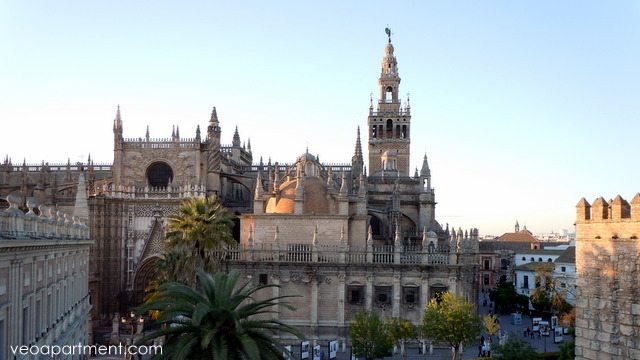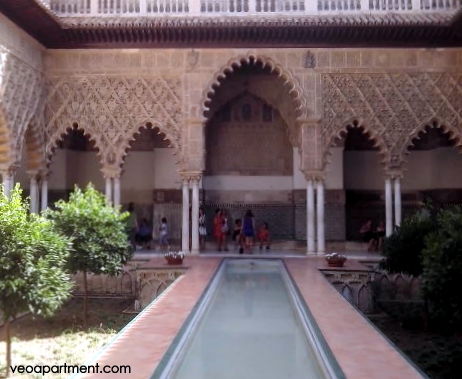
You don’t really need any additional excuses to come to a city as beautiful as Seville for your holidays, or to visit its top tourist attraction, Los Reales Alcazares (the Royal Palace), but this amazing place is now being brought to a wider audience, courtesy of the block-busting TV series, A Game of Thrones.
In series 5 of the adaptation of George R.R. Martin’s books, A Song of Ice and Fire, the Alcázar plays host to the exotic Water Gardens of Dorne, seat of House Martell and the southernmost of the Seven Kingdoms of Westeros. Here are played out the intrigues and plots, murder and mayhem of the great houses (actually I’m just guessing as I haven’t seen it yet, but I’m betting they don’t just sit around knitting and playing whist).
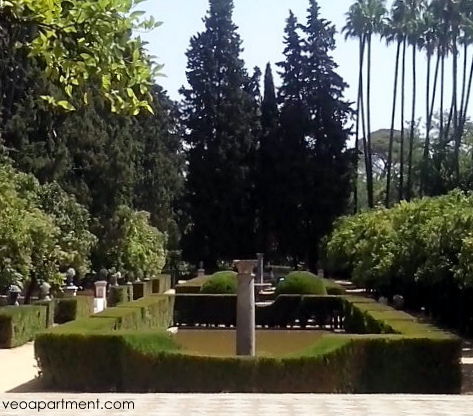
But the subtropical greenery, pools, fountains and lavishly tiled courtyards aren’t the only reason why the Alcázar is a fitting choice for the location of the high drama of A Game of Thrones. Still an official residence of the Spanish royal family, this is the longest serving palace in Europe, and has seen its fair share of drama and intrigue over the years.
In the year 913, by the order of the Arabic Caliphs who ruled Spain from their seat in Córdoba, the southernmost Roman-Visigothic suburb of the city was demolished, and a new palace for the governor of Seville was constructed in the area of the Plaster Courtyard and Patio de Banderas. In the 11th century, after the collapse of the Caliphate, the Almoravids, a Moorish clan from North Africa gained control of the city and extended and refortified the palace area. More buildings were added by the Almohad dynasty in the 12th century, including a covered way from the palace to the new Grand Mosque that allowed the rulers to avoid coming into contact with the common people.
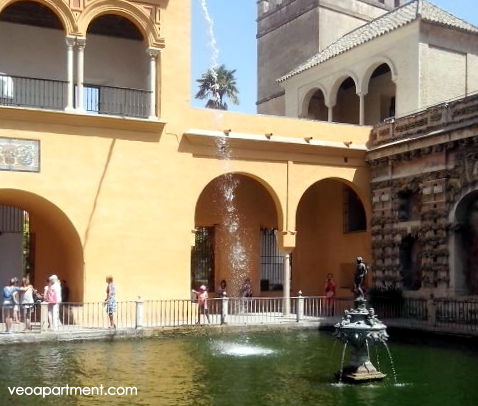
Apart from the impressive outer walls of the compound in the Plaza del Triunfo, little remains from this period – just a short section of wall between the Lion Gate and the Patio de la Montería, and the Justice Room and Plaster Courtyard to its left. The Gothic Palace was the first to be constructed by the new Christian rulers shortly after the reconquest of 1248. The palace was badly damaged in the Lisbon earthquake of 1755, and parts of the original ground floor were filled in and a new upper floor constructed. Some of the best views of the gardens, which you can see in Game of Thrones, are provided by the big windows in the upper galleries.
Also featured heavily is the tiled magnificence of the principal Royal residence, the Mudejar Palace, built for Pedro I (the Cruel) in the 14th century, mostly by those Moorish craftsmen who had stayed in Seville, and who are responsible for the “Arabian Nights” romantic appeal of its architecture and decoration, especially the long pool and sunken flower beds of the central Patio, the Patio of the Maidens
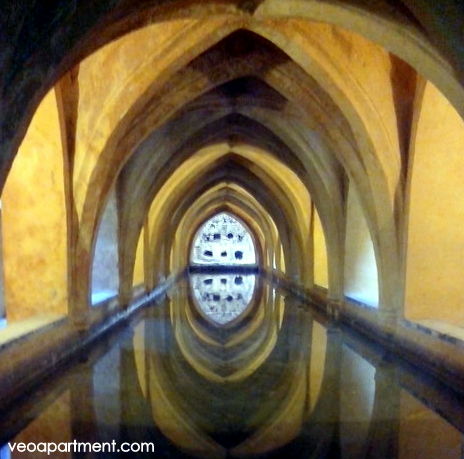
Other favourite places which do (or should) appear, include the Baños de Doña Maria Padilla (actually rainwater tanks beneath the Gothic palace), the Pavilion of Charles V, and the Gallery of Grotesques (originally part of the city wall, but extensively remodelled in Italian renaissance style by Philip III), as well as the main gardens and garden courtyards in various styles.
For a place to stay while you’re here have a look at one of our wide selection of apartments in the neighbouring Santa Cruz, with its picture postcard streets and squares.
